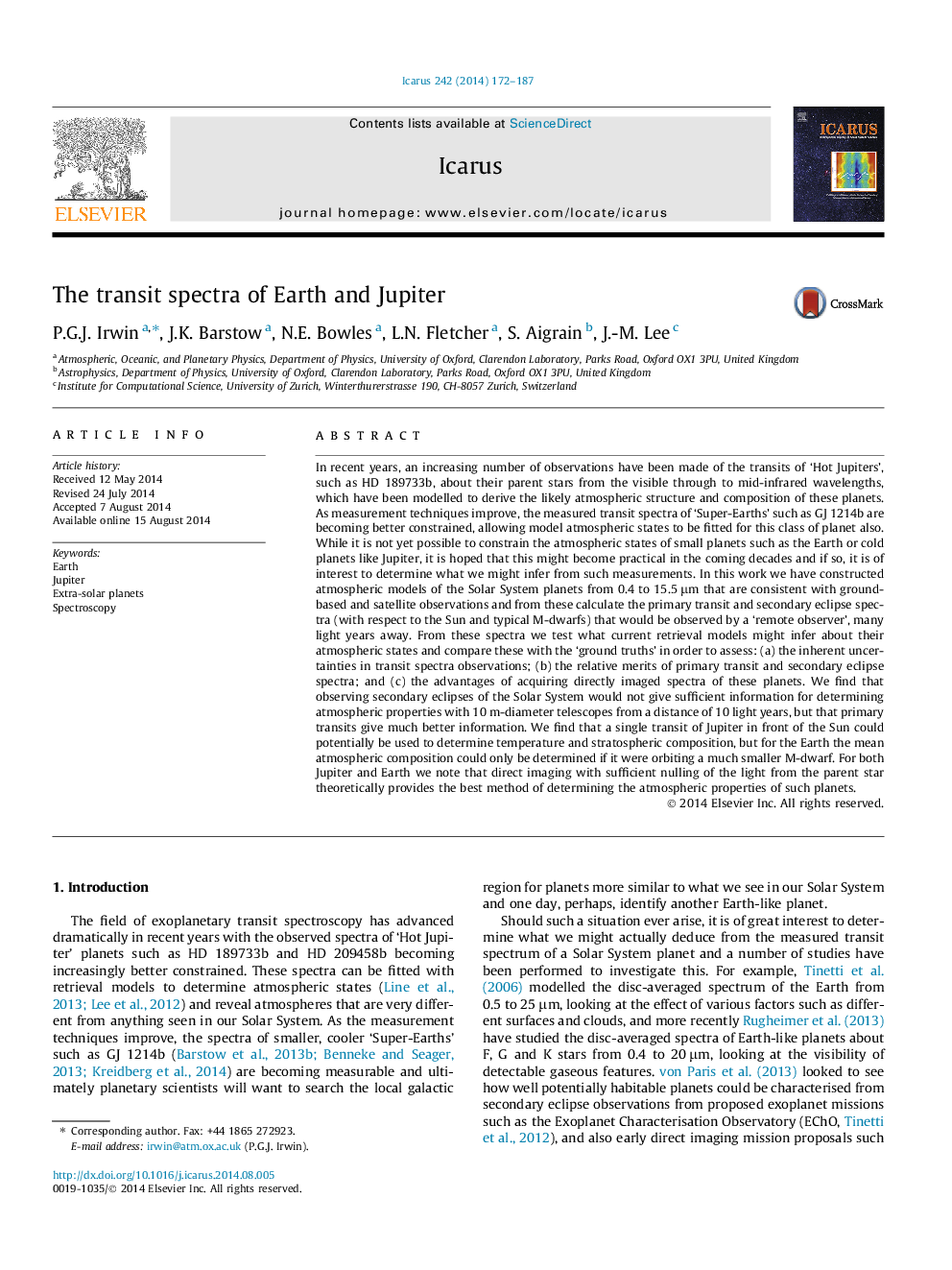| کد مقاله | کد نشریه | سال انتشار | مقاله انگلیسی | نسخه تمام متن |
|---|---|---|---|---|
| 8137614 | 1523548 | 2014 | 16 صفحه PDF | دانلود رایگان |
عنوان انگلیسی مقاله ISI
The transit spectra of Earth and Jupiter
ترجمه فارسی عنوان
طیف ترانزیتی زمین و مشتری
دانلود مقاله + سفارش ترجمه
دانلود مقاله ISI انگلیسی
رایگان برای ایرانیان
کلمات کلیدی
زمین، سیاره مشتری، سیارات اضافی خورشیدی، طیف سنجی،
موضوعات مرتبط
مهندسی و علوم پایه
علوم زمین و سیارات
علوم فضا و نجوم
چکیده انگلیسی
In recent years, an increasing number of observations have been made of the transits of 'Hot Jupiters', such as HD 189733b, about their parent stars from the visible through to mid-infrared wavelengths, which have been modelled to derive the likely atmospheric structure and composition of these planets. As measurement techniques improve, the measured transit spectra of 'Super-Earths' such as GJ 1214b are becoming better constrained, allowing model atmospheric states to be fitted for this class of planet also. While it is not yet possible to constrain the atmospheric states of small planets such as the Earth or cold planets like Jupiter, it is hoped that this might become practical in the coming decades and if so, it is of interest to determine what we might infer from such measurements. In this work we have constructed atmospheric models of the Solar System planets from 0.4 to 15.5 μm that are consistent with ground-based and satellite observations and from these calculate the primary transit and secondary eclipse spectra (with respect to the Sun and typical M-dwarfs) that would be observed by a 'remote observer', many light years away. From these spectra we test what current retrieval models might infer about their atmospheric states and compare these with the 'ground truths' in order to assess: (a) the inherent uncertainties in transit spectra observations; (b) the relative merits of primary transit and secondary eclipse spectra; and (c) the advantages of acquiring directly imaged spectra of these planets. We find that observing secondary eclipses of the Solar System would not give sufficient information for determining atmospheric properties with 10 m-diameter telescopes from a distance of 10 light years, but that primary transits give much better information. We find that a single transit of Jupiter in front of the Sun could potentially be used to determine temperature and stratospheric composition, but for the Earth the mean atmospheric composition could only be determined if it were orbiting a much smaller M-dwarf. For both Jupiter and Earth we note that direct imaging with sufficient nulling of the light from the parent star theoretically provides the best method of determining the atmospheric properties of such planets.
ناشر
Database: Elsevier - ScienceDirect (ساینس دایرکت)
Journal: Icarus - Volume 242, 1 November 2014, Pages 172-187
Journal: Icarus - Volume 242, 1 November 2014, Pages 172-187
نویسندگان
P.G.J. Irwin, J.K. Barstow, N.E. Bowles, L.N. Fletcher, S. Aigrain, J.-M. Lee,
